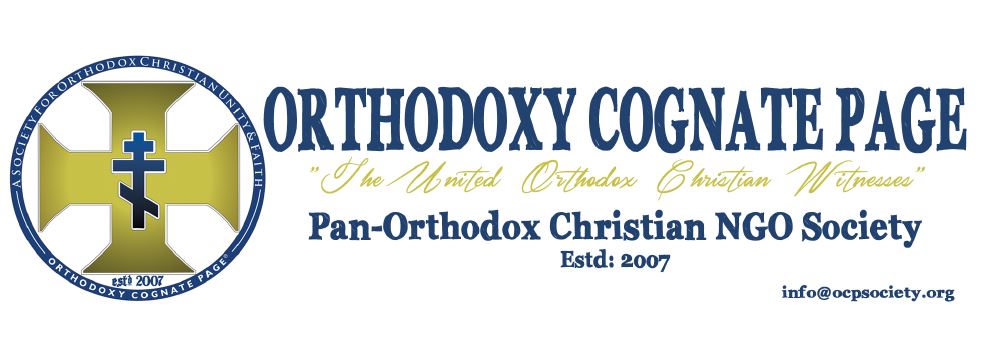March is Antiochian Women’s Month
Antiochian Orthodox Christian Archdiocese of North America
Antiochian Orthodox Christian Women of North America- Website
The month of March has been designated as Antiochian Women’s Month by His Eminence, Metropolitan PHILIP. During the month of March every year, women are encouraged to express the fullness of their ministry in the Church. Sponsored by the Antiochian Women, each local chapter is encouraged to hold activities during the month of March and to participate in the Liturgy by reading the Epistle, delivering the homily, and ministering to the parish, the archdiocese, and the community.
Especially during the month of March, women are encouraged to minister to the needs of the poor, infirm and aged, engage in local charitable and humanitarian works, and raise funds for the Project of the Antiochian Women.
Notes Roberta Royhab, Public Relations Director, “Since 1975, Metropolitan PHILIP has challenged the Antiochian Women to raise funds for a worthy project. Over $2,300,000 has been raised in support of special projects, such as, Antiochian Village, Married Seminarians, Missions, Project Orphanages, Retired Clergy Housing Fund, and more recently Al Kafaat, to name a few. This year our project is The Convent of St. Thekla which will be built on the grounds of Antiochian Village, a vision Metropolitan PHILIP has had for many years.
As many of you may know, Saint Thekla was called the First Martyr because she was the first Christian woman who suffered torture and persecution for the sake of God. She was given the title, Equal to the Apostles because she carried on preaching, teaching and baptizing as if she were one of the Twelve Apostles.
St. Thekla was from the city of Iconia. She was born of pagan parents and considered to be a great beauty. In the year 45 A.D., when she was eighteen years old, St. Paul came to Iconia to preach the word of God. He urged the people to purity, chastity, and to pray and love one another. Listening from her bedroom window, St. Thekla listened to his every word, so much so, that she remained without food. Her mother became very concerned and urged her husband, who was the governor at that time, to persuade their daughter to maintain her religion. St. Thekla’s father referred to St. Paul’s words as absurd, and that their Pagan religion was the tradition of their ancestors. He asked her to come back to her senses. She politely told her father our religion has no principle, that the statues that they worship are made of immovable stones and are without soul and without spirit. They do not hear or see, but Paul’s God is the real great God, the Creator of the universe.
Upon hearing her words, her mother became so enraged, she told her husband to, “Burn this hypocrite”. Her father then ordered Paul to be smitten and ordered out of the city, and his daughter Thekla, to be burned at the stake. As she bravely approached the burning wood, she made the Sign of the Cross over the flames and as she stepped forward, the sky suddenly became full of dark clouds, thunder and lightening, and it rained heavily, extinguishing the flames. Thekla was saved. Her angry father then ordered her to be thrown into a dark well with fierce lions, but they became tame in her presence. Next, her waist was tied with ropes to the horns of bulls and heated iron was put on her clothing in hopes of burning her, but the fire only burned the ropes and again she was saved. Even when placed in a room with venomous snakes, the snakes fled away, and Thekla was untouched. When her father ordered her head to be cut off, St. Thekla fled to Antioch, then toward Syria. Her fathers’ men remained in pursuit of her, but St. Thekla escaped, traveling on foot through valleys and over mountains. When she reached the base of Maloula Mountain, she was very tired. It was very high and she was unable to go any further. So she knelt, raised her hands and prayed to God. Suddenly, the mountain divided into two parts and a stream of water rushed under her feet. St. Thekla passed through the gap and found at its end a cave in the mountain, where she chose to live in order to be devoted to her prayers and worship to God. Here she remained praying, fasting, preaching, baptizing, and curing the sick, until her death at the end of the First Century. St. Thekla was buried in her cave, where her remains can be found until this very day.*
How fitting it is for us to also have a Convent of St. Thekla at Antiochian Village. Please join the North American Board of Antiochian Women in working on this exciting and worthwhile project. With faith, love and determination, please help us to make this vision a reality.


884302 303647Wow, wonderful weblog layout! How lengthy have you ever been running a weblog for? you make running a weblog glance simple. The total look of your internet web site is magnificent, well the content material! 688625
531216 677594The electronic cigarette uses a battery and a small heating factor the vaporize the e-liquid. This vapor can then be inhaled and exhaled 779892